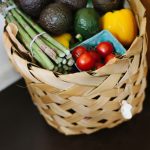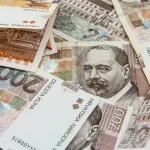As Poslovni Dnevnik writes, the European Union (EU) is still currently unable to predict precisely how much pork prices will rise in the future due to the extremely uncertain situation on the global market, but it is quite certain that a price shock is definitely expected.
Prices are expected to rise soon in order for the sector to be able to continue to survive on the market. There are fears of further consequences and impact on the market due to the war between Russia and Ukraine, which will have the greatest impact on the increased costs of animal feed, but also on the prices of energy, fuel and so on.
These are the conclusions from the meetings of the Group for Civil Dialogue for Products of Animal Origin – Working Group for Pork of the European Commission, which was attended by representatives of the Croatian Chamber of Agriculture.
“The price of pork across the EU began to recover only at the end of 2021, and stronger growth was expected at the end of the first and the beginning of the second quarter of 2022. The projected growth of prices in 2022 compared to 2021 is approximately 13 percent, but this can be considered a relatively conservative estimate given the Ukrainian crisis and volatility in the accompanying markets, so the growth of pork prices by the end of 2022 could actually be much stronger,” it was announced after the meeting from the Croatian Chamber of Agriculture.
The meeting concluded that the future of the sector is extremely uncertain and this of course poses an enormous challenge for all producers, but it is considered an opportunity to develop better conditions for pork production in the future, as well as for the development of better conditions for livestock production.
Help for the sector
Next week, a meeting of the working group of the European Copa Cogeca Association will discuss measures to mitigate the situation in the sector.
Some of the proposed topics and measures to help the sector out are to initiate the development of measures to ensure strategic stocks of animal feed, to increase domestic feed production, to activate available support mechanisms for the sustainability of the three essential pillars – economic, social and environmental. There will also be measures to support farmers who want to leave pork production. It will also be necessary to work together on strengthening promotion programmes for the internal market and for third countries, the effective control of large traders and their attitude towards consumers, as well as concluding long-term production contracts, as well as initiating measures to motivate young farmers to work and invest in pork production. On top of that, we need to design new credit lines for this sector.
The pork sector here in Croatia represents an important segment in the total value of agricultural production of the country with a share of approximately 25 percent (recorded back in 2020). The consumption of pork per capita in Croatia stands at approximately 50 kg, which is far more than other types of meat. The fact that Croatian meat prices are likely to increase is naturally an additional burden for both producer and consumer.
Although pork production here in Croatia grew by 3.7 percent back in 2020 when compared to 2019, the number of sows decreased from 99,000 to 88,000, and the number of gilts decreased from 26,000 to 24,000. This is proof that a large part of pig production in Croatia depends on imports of live animals.
“The official data for 2021 hasn’t yet been published, but the number of pigs is expected to fall by approximately 2 percent annually here in Croatia. Such an assessment can be considered somewhat conservative, given that the sector faced a number of problems during the last period, such as rising prices for basic inputs and record low prices for meat in the common market. In 2022, a further downward trend in the number of pigs in Croatia is expected for similar reasons, except that the estimated decline in the number of pigs of 3.25 percent could be higher than expected if the current volatility in energy and basic input markets fails to stabilise,” they concluded from HPK.
For more, check out our lifestyle section.











